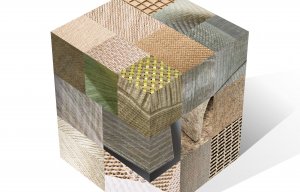
Getting across the benefits of flax
As renewable European resources, natural flax and hemp fibres have become the champions of a bio economy.

17th September 2018
Innovation in Textiles
|
Paris
The European Confederation of Flax and Hemp (CELC) in collaboration with its European Scientific Council are launching the new publication Flax & Hemp Fiber composites, a market reality, the bio based solutions for the industry, co-edited with JEC Group.
This publication confirms that flax and hemp fibres provide efficient and differentiating solutions for the composite industry. It addresses flax and hemp reinforcements available on the market; characterisation and standardisation tools and methods; the remarkable properties besides the fibres’ mechanical performance, as added value for composite products; the composite manufacturing processes and applications on the market; and a a view on sustainability through life cycle analyses.
“The limits for applications and new sectors are constantly being pushed back, and manufacturers are more and more interested in the remarkable properties of these natural fibres,” commented Anne-Carole Barbarin, Development and Publications Director, JEC Group.
“Buoyed by the active innovation strategy led by the European flax and hemp industry, these dynamics have successfully met the expectations of all our partners, be they manufacturers, engineering departments, or designers. All sectors are now concerned, including design objects, acoustics, mobility, sports and leisure, automotive, aerospace, interior architecture, wind energy, yachting, and more broadly, consumer goods. All have become our customers,” said Marc Depestele, President of the CELC Technical Section.
“By establishing its European Scientific Council, the European Confederation of Flax and Hemp has been able to lay the foundation for a long-term R&D strategy, helped along by the remarkable properties of flax - of which Europe is the world’s leading producer - and guided by an industrialisation process in which open innovation plays a prominent role. The industry is fully engaged and ready to meet expectations in the industrial markets.”
This new reality has provided the opportunity to demonstrate that flax and hemp fibres are not limited to the role of a substitute for fossil resources. They can capitalise on their combined environmental benefits and exclusive mechanical properties.
The aim of CELC’s European Scientific Council is to bring the science and technology of composite materials and that of flax and hemp fibres together. In this way, the ESC intends to bridge the gap and create fruitful interactions between the industrial world of composite processing/application development and the agricultural world of flax and hemp farming, via the high-tech industry of fibre extraction and processing into advanced flax and hemp fibre preforms.
This book not only presents basic information on flax and hemp fibres, but also provides straight answers to some worries and misconceptions, highlights the newest scientific insights on a range of additional properties and scientifically assesses the ecological advantages of using flax and hemp fibres in composites. “Of course, not all challenges have been addressed yet, but major steps forward have been made since the first joint CELC-JEC book on flax and hemp fibre composites was published. By interacting via this new book with the composite community, the flax and hemp fibre community will discover the future requirements for composites, and find creative ways to come up with even better and more efficient solutions for the composites industry,” said Ignaas Verpoest, Coordinator of the European Scientific Council of CELC.

Business intelligence for the fibre, textiles and apparel industries: technologies, innovations, markets, investments, trade policy, sourcing, strategy...
Find out more